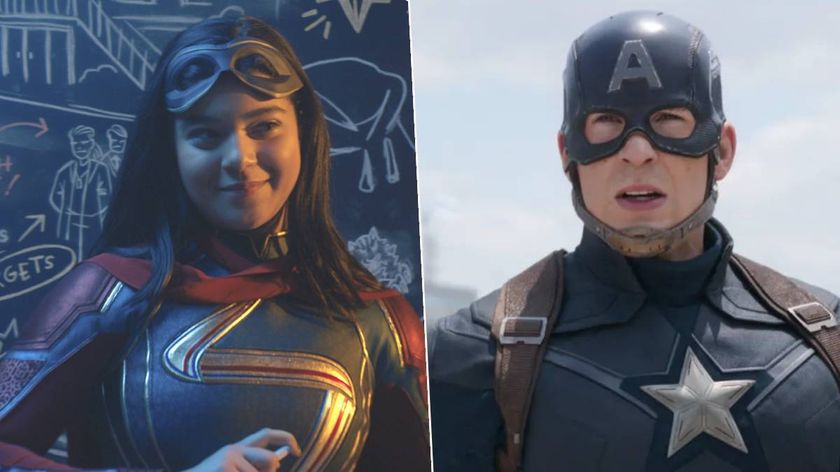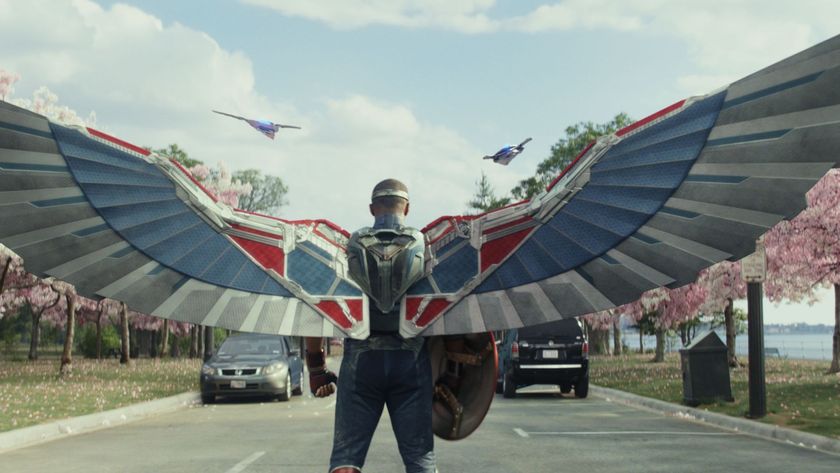50 Best British Movies
This is their finest hour…
Brief Encounter (1945)
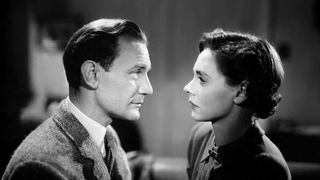
The Film: Often voted the greatest romantic film of all time, it’s surprising how much emotion is kept crammed safely below the surface in David Lean’s swoony, bittersweet melodrama. Effectively the story of a love affair that never happens, Celia Johnson and Trevor Howard play two happily married strangers who bump into each other on the same commute home every day. Trains have never been quite so… steamy.
The Best Brit Bit: With the sound of the train whistle recalling everything that’s wrong with her marriage, her sex life and the whole culture of stiff-upper lips that somehow managed to survive the horrors of WWII, Laura’s (Johnson) last meeting with Alec (Howard) is ruined by a talkative busybody.
Why It Couldn’t Be Made Anywhere Else: To err is human; to forgive, divine; to never, ever act on your emotions is British.
Trainspotting (1996)
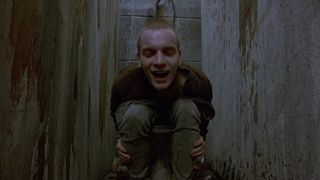
The Film: Sharing an uneasy give and take with the zeitgeist it captured, Danny Boyle’s blast of Brit-pop energy defined the 90's. A self-destructive, anarchic, exhilarating mantra of a film – ripping pages from Irvine Welsh’s source novel with greedy hands – Trainspotting circles the lives of a group of Edinburgh junkies (Ewan McGreggor, Ewan Bremner and Johnny Miller) and sets the beat of an entire generation to their own raging pulses.
The Best Brit Bit: Babies on ceilings, heads down toilets and needles in arms – the best scene is still the first. With Rent Boy (McGreggor) running from a security guard along Princes Street to the tune of Iggy Pop’s Lust For Life and Welsh’s immortal ‘Choose Life’ speech.
Why It Couldn’t Be Made Anywhere Else: Deemed so Scottish on its original American release, 20 minutes of dialogue was re-edited to make the accents more understandable.
The Bridge On The River Kwai (1957)

The Film: The story of British prisoners of war forced to build the Burmese railway during WWII, David Lean’s epic war movie is much more than a blown bridge and a footie-fan whistle. Alec Guinness gives the performance of his career as the deranged Colonel Nicholson – a man so obsessed with playing by the rule book that it almost kills him.
Sign up for the Total Film Newsletter
Bringing all the latest movie news, features, and reviews to your inbox
The Best Brit Bit: Faced with a brutal captor (Sessue Hayakawa – playing a man just as obsessed with protocol), Nicholson (Guinness) refuses to back down on the slightest point of principle. As the two mad men clash heads, Lean casually unravels the absurdities of war.
Why It Couldn’t Be Made Anywhere Else: Technically it was made in Sri Lanka – but who’s doubting David Lean? (And who would dare try to remake it?)
Kind Hearts And Coronets (1949)
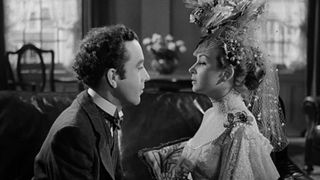
The Film: Ealing’s best comedy is also its blackest – the gleefully upbeat tale of an Edwardian gent (Dennis Price) who bumps off his entire family to work his way up the inheritance chain. Alec Guinness plays all eight members of the D’Ascoyne family in their various bloody, brief, cameos. Directed by Robert Hammer with Wes Anderson-esque whimsy – it’s as appallingly wonderful as it is wonderfully appalling.
The Best Brit Bit: Watching amateur photographer Henry D’Ascoyne (one of the Guinnesses) go up in smoke – whilst Louis Mazzini (Price) sips tea with his wife – is almost as darkly funny as watching Mazzini joyfully strike him off the family tree on his bedroom wall.
Why It Couldn’t Be Made Anywhere Else: Who else but Guinness could ever have played the entire D’Ascoyne family?
A Matter Of Life And Death (1946)
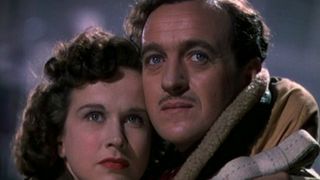
The Film: It's World War 2. Pilot Peter Carter's plane has taken exorbitant damage during a bombing mission, and as it nosedives into the sea, he calls June - an Allied phone operator, talking to her during what he believes are his last minutes on earth. Miraculously he survives, afterwards finding and falling in love with June. But their life together is thrown into disarray when a divine messenger arrives to claim Peter and take him to 'the other world', i.e. the afterlife. He wasn't meant to survive the plane crash. The way to solve this? Take the afterlife to court, to argue Peter's case for remaining alive.
The Best Brit Bit: The bittersweet moment when Peter's best friend Doctor Reeves is killed in a motorbike accident, meaning - because he's dead - he can defend Peter in court. Seeing him passionately argue that June's love for Peter is more important than universal law whilst Peter is going through a risky operation hits hard.
Why It Couldn’t Be Made Anywhere Else: David Niven, first off. Plus Richard Attenborough, and the fact that it manages to combine court room drama, ghosts, Shakespeare, romance, and philosophy effortlessly. AND it was used in the 2012 London Olympic's Opening Ceremony. What more do you need?
Barry Lyndon (1975)
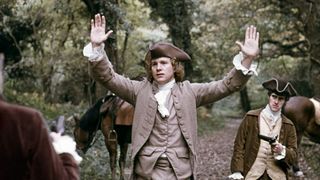
The Film: Taking William Makepeace Thackeray’s 1844 novel and turning it into a stately, baroque behemoth – Stanley Kubrick shows us how a literary period piece is really done. As unhurried as it is achingly beautiful – the oppressive, dour tone hangs palpably over the candlelit interiors and rolling English countryside – the setting for Redmond Barry’s (Ryan O’Neal) resistible rise through the ranks of 18th Century society.
The Best Brit Bit: Lavishly filmed on new camera lenses gleaned from the Hubble space telescope, Barry Lyndon was a perfect fit for Kubrick’s painterly perfectionism. With the sprawling story punctuated by a series of duels, the most memorable scenes are the most excruciating: Bach’s heavy lidded oboe Concerto laboring the pace, Redmond, his opponent, and the audience wait feverishly for the first and finals shot to break the tension.
Why It Couldn’t Be Made Anywhere Else: It’s a question of logistics – Kubrick, who lived in England, hated flying.
The Red Shoes (1948)

The Film: Following Black Narcissus with a Technicolor fairy-tale about a struggling ballet company, Powell and Pressburger crafted their masterpiece. Moira Shearer is the unknown dancer who joins the Ballet Lermantov and follows its charismatic impresario (Anton Walbrook) around the European tour. Dazzling cinematography, dance, colour and music combine in Britain’s most technically, visually impressive work of cinema.
The Best Brit Bit: Built around a single 17-minute ballet, the camera moves from the back of the theatre into the very heart of the dance – an impressionistic whirl of sight and sound.
Why It Couldn’t Be Made Anywhere Else : If it could have been made anywhere else, Martin Scorsese would have tried. Reportedly such a fan, he owns one of the original wool shirts used in the film (and probably wears it on special occasions).
A Clockwork Orange (1971)
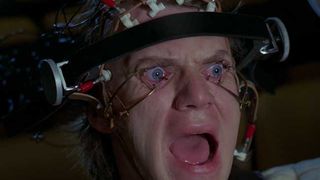
The Film: Disturbing, psychotic, ultra-violent, angry, academic and undeniably brilliant – Stanley Kubrick’s adaptation of Anthony Burgess’ cult novel is a lot of things to a lot of people. More a subversive statement about modern life (and modern cinema) than a conventional film, sadistic punk Alex (Malcolm McDowell) kicks, beats and rapes his way thorough a cartoon nightmare of the future – conditioned and “cured” by a broken society that looks worryingly like our own.
The Best Brit Bit: Few films burn themselves onto your retinas like A Clockwork Orange and it starts from the very first shot. Block colour titles open to reveal a close up on Alex’s face – his eyes mascaraed and his mouth twisted in a cruel grin – as the camera slowly pulls back to reveal the interior of the Moloko Vellocet milk bar.
Why It Couldn’t Be Made Anywhere Else: It might have been made in Britain, but it took a long time for most people to see it. Pulled from the cinema by Kubrick himself after a grisly copycat killing, it was unavailable in the UK for 27 years.
The Third Man (1949)

The Film: Quite possibly the greatest film noir ever made, Carol Reed’s labyrinthine masterpiece sets its stage on the twisty back streets of post-war Vienna. An American writer (Joseph Cotton) is summoned to the city by an old friend (Orson Welles), and he spends half the film trying to work out why. Getting embroiled in a sticky black market plot, the film culminates in chase through the silhouetted sewers – with Welles’ cool performance, Anton Karas’s jaunty zither score and Robert Krasker’s jagged cinematography skewing the film in three different directions at once.
The Best Brit Bit: Harry Lime’s introduction is the stuff of cinema legend. Wandering the dark streets looking for his friend, Holly (Cotton) is about to give up when the flash of a broken lightbulb reveals Lime (Welles) standing in a doorway – watching with a wry smile – before he sinks back into the shadows.
Why It Couldn’t Be Made Anywhere Else: Film Noir might be a very American genre – but it took a British writer and director (Graham Greene and Carol Reed) to master it.
Lawrence Of Arabia (1962)
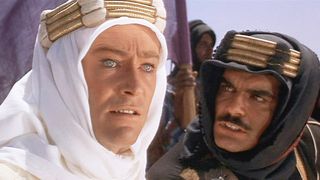
The Film: Bigger than the screen it plays on, deeper than the story it delves into and more ambitious, grandiose and complex than any film that dares sit beside it – David Lean’s monumental masterpiece redefined the epic. A delicate character study played out on the largest, most spectacular canvas imaginable, Lawrence Of Arabia puts Peter O’Toole’s self-destructive British officer in the middle of the Arabian peninsula during WWI. With balance, scope and perfection in each and every frame (Lean even taking the time to dust unsightly footprints from the sand between each take), it’s also the most beautiful adventure story every told.
The Best Brit Bit: Lawrence was Egyptian actor Omar Sharif’s first English language role and David Lean gifted him cinema’s greatest introduction. Emerging from the shimmering heat of the desert, Sharif starts as a dot on the horizon before drawing slowly nearer and clearer – a rifle shot breaking the silence – before arriving in full frame.
Why It Couldn’t Be Made Anywhere Else: One of the most influential films ever made, pretty much every director since has cited it as an inspiration – with Steven Spielberg calling it "a miracle". Although many have tried to match its scope and scale, a film like Lawrence Of Arabia couldn’t possibly be made twice.
Most Popular





